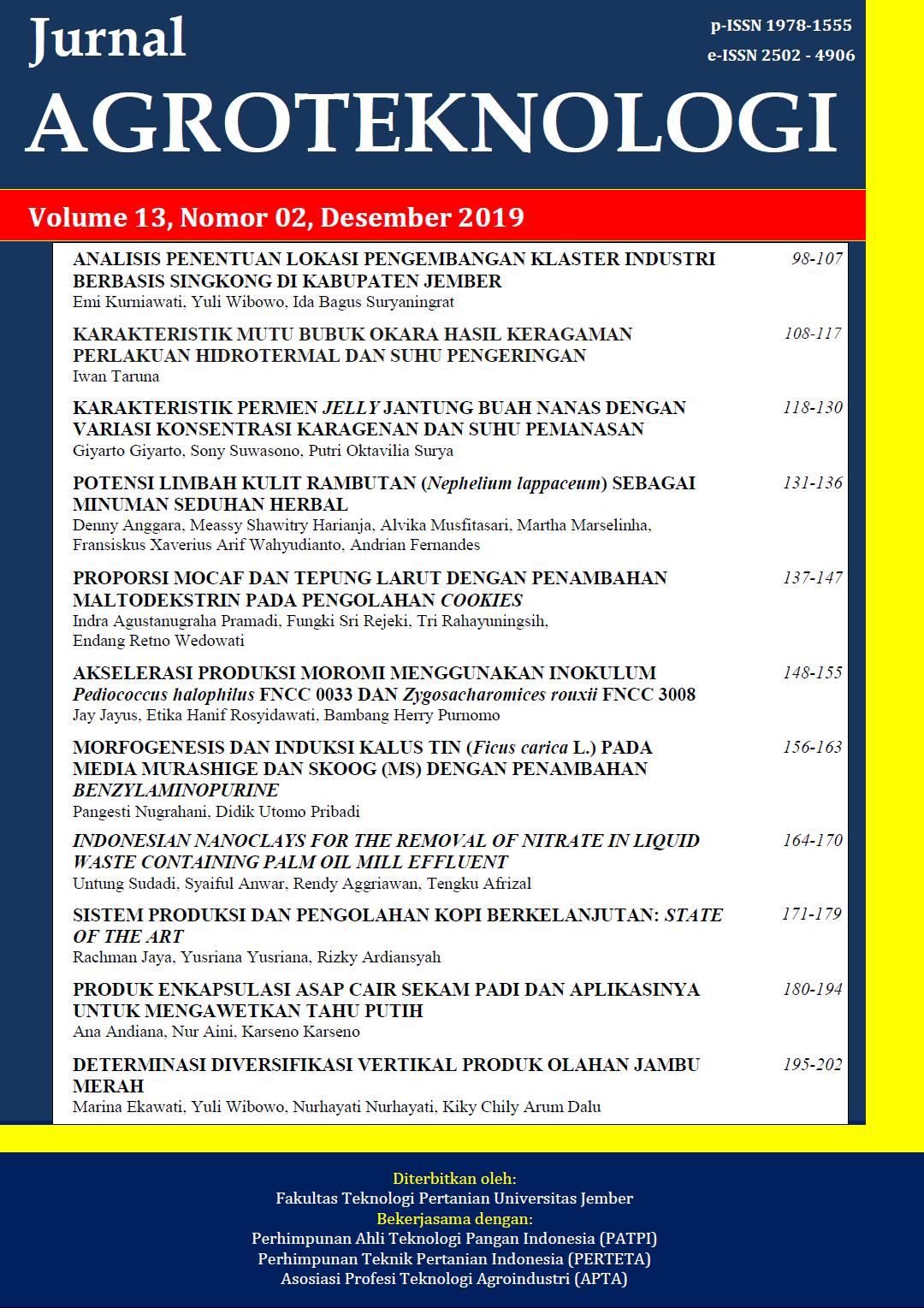KARAKTERISTIK PERMEN JELLY JANTUNG BUAH NANAS DENGAN VARIASI KONSENTRASI KARAGENAN DAN SUHU PEMANASAN
DOI:
https://doi.org/10.19184/j-agt.v13i02.10456Abstract
Utilization of pineapple waste as by-product of pineapple fruit consumption such as peel, fruit eyes, and the core of the pineapple is still low. The middle part of the pineapple fruit called core has elongated shape, rather hard texture, and slightly of sweet and sour taste. Sweet and sour taste from the pineapple core had good nutritional content, so it enabling to be developed into more economically products, such as jelly candy. Chewy texture, transparent colors, sweetness, and fruity aroma as the jelly candy’s properties are strongly influenced by the gelling components and the temperature processing. The use of right combination between carrageenan concentration, pineapple core, and heating temperature can produced a good quality jelly candy. This research was carried out with Randomized Complete Block Design (RAK) method with two factors, i.e. variations of carrageenan (2%, 3% and 4% (b/v) and heating temperature (70°C, 80°C, 90°C). The aims of the research were to known characteristic of pineapple core jelly candy and determined the best formulation of it based on pishical, chemical and organoleptic characteristic. The result showed that the variation of 3% carrageenan and cooking temperature of 90°C was the best formulation of the pineapple core jelly candy with an effectiveness value of 0.66. It has texture value of 376.47 ± 0.71 g/mm; moisture content of 16.16 ± 0.37%; ash content of 1.26 ± 0.24%; vitamin C of 12.80 ± 0.69 mg/100g; reduction sugar of 11.90 ± 0.02%; and sucrose of 28.55 ± 0.24%. Based from organoleptic of jelly candy, the panelists like of texture (4.6), chewy texture (4.76) and rather like of the color (3.76), taste (4.28), aroma (4.04), overall organoleptic (4.12).
Keywords: carrageenan, core of the pineapple, cooking temperature, organoleptic
Downloads
Downloads
Published
Issue
Section
License
Jurnal Agroteknologi has CC-BY-SA or an equivalent license as the optimal license for the publication, distribution, use, and reuse of scholarly work. Authors who publish with this journal retain copyright and grant the journal the right of first publication with the work simultaneously licensed under a Creative Commons Attribution-ShareAlike 4.0 International License that allows others to share the work with an acknowledgment of the work's authorship and initial publication in this journal.









.png)
